广西中峰乡育才中学八年级英语(外研版)上册教学课件:Module2 Unit 1 It’s taller than many other buildings (共41张PPT)
文档属性
| 名称 | 广西中峰乡育才中学八年级英语(外研版)上册教学课件:Module2 Unit 1 It’s taller than many other buildings (共41张PPT) | 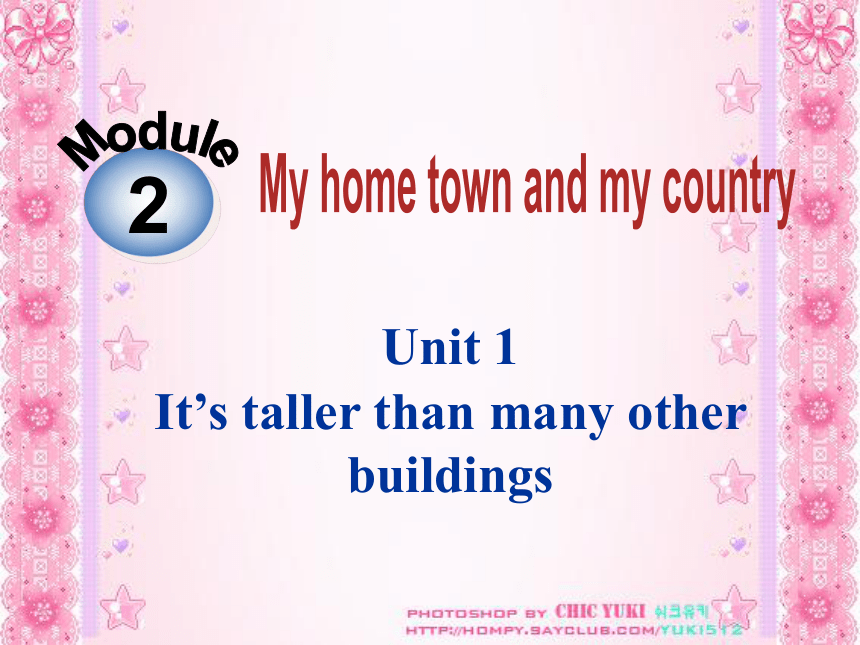 | |
| 格式 | zip | ||
| 文件大小 | 4.6MB | ||
| 资源类型 | 教案 | ||
| 版本资源 | 外研版 | ||
| 科目 | 英语 | ||
| 更新时间 | 2016-10-17 18:28:34 | ||
图片预览

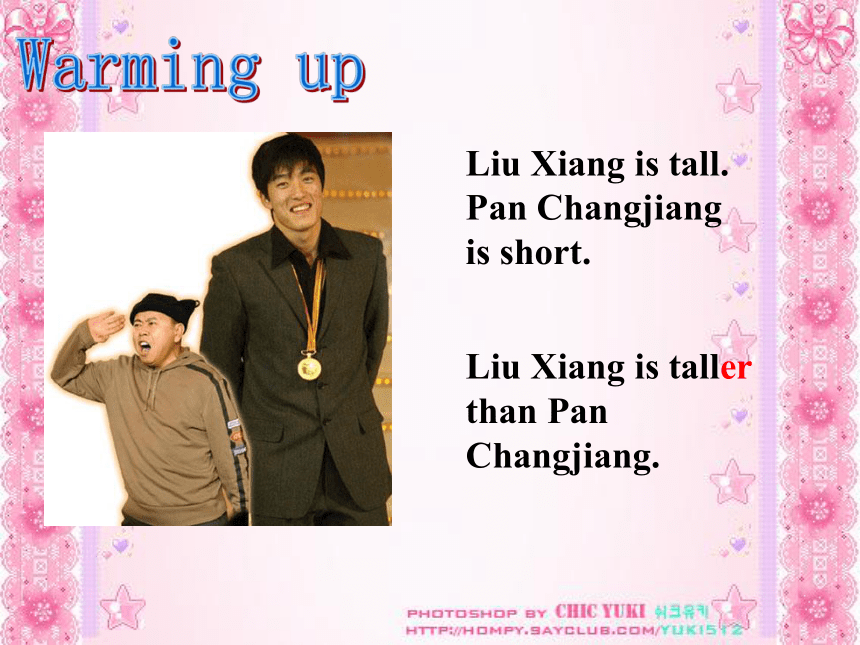
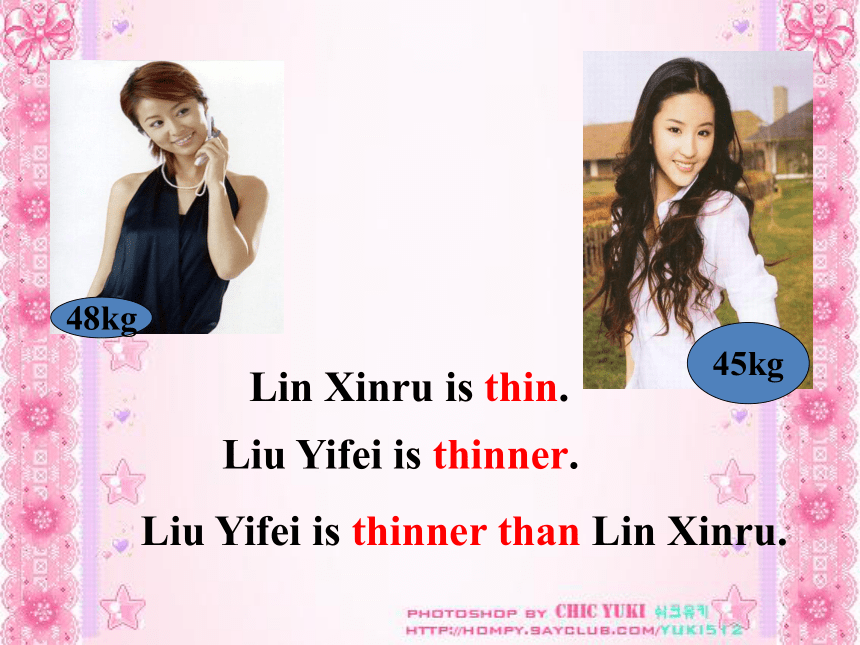
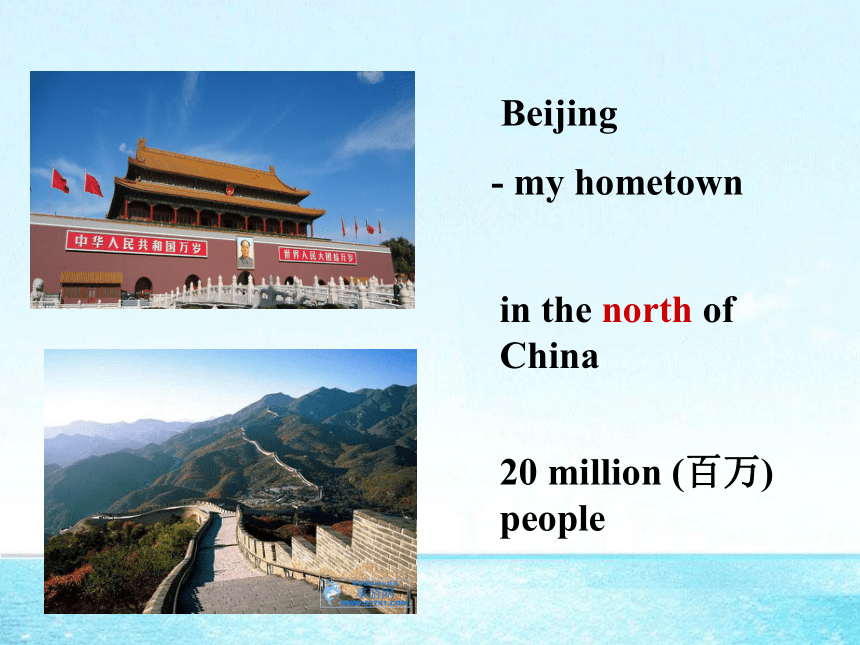
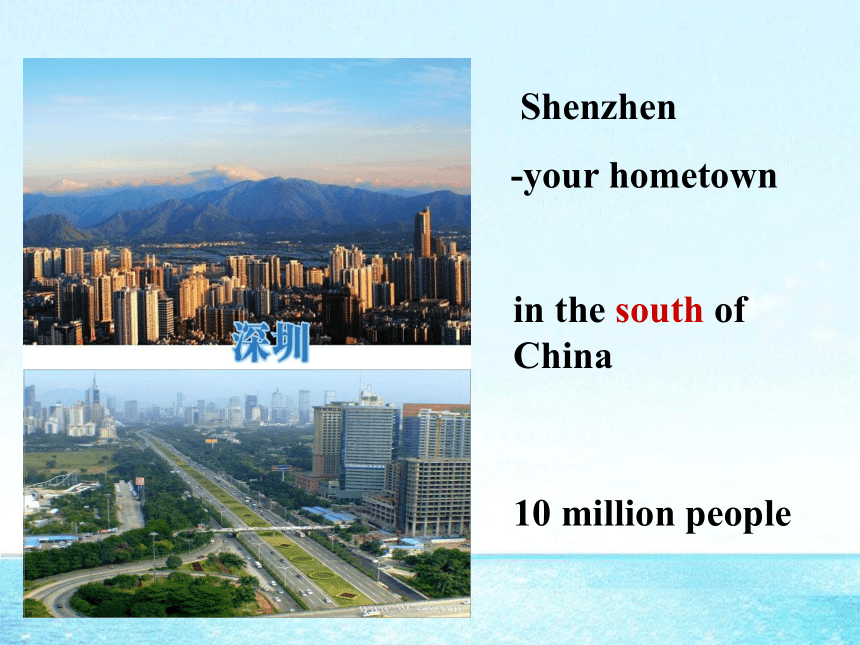
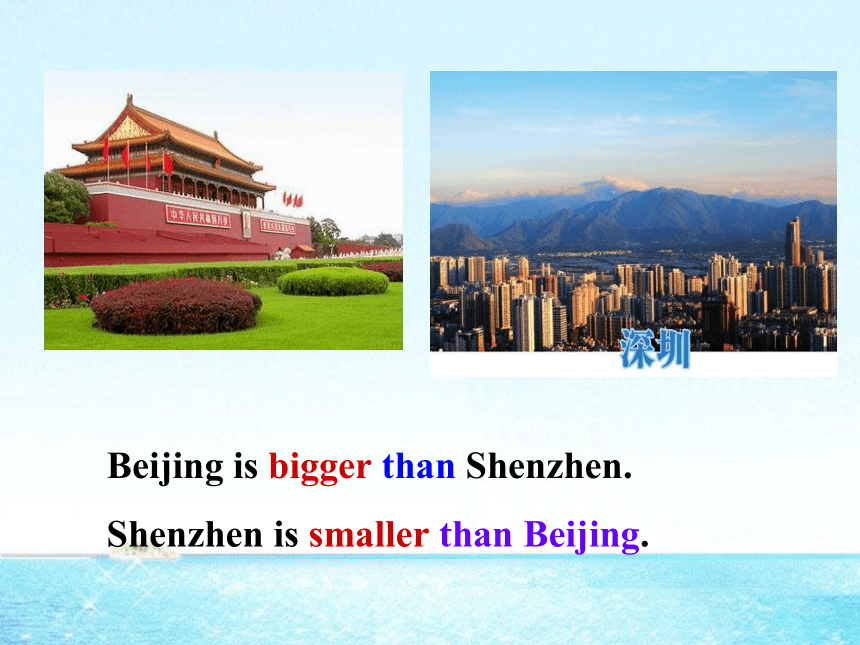
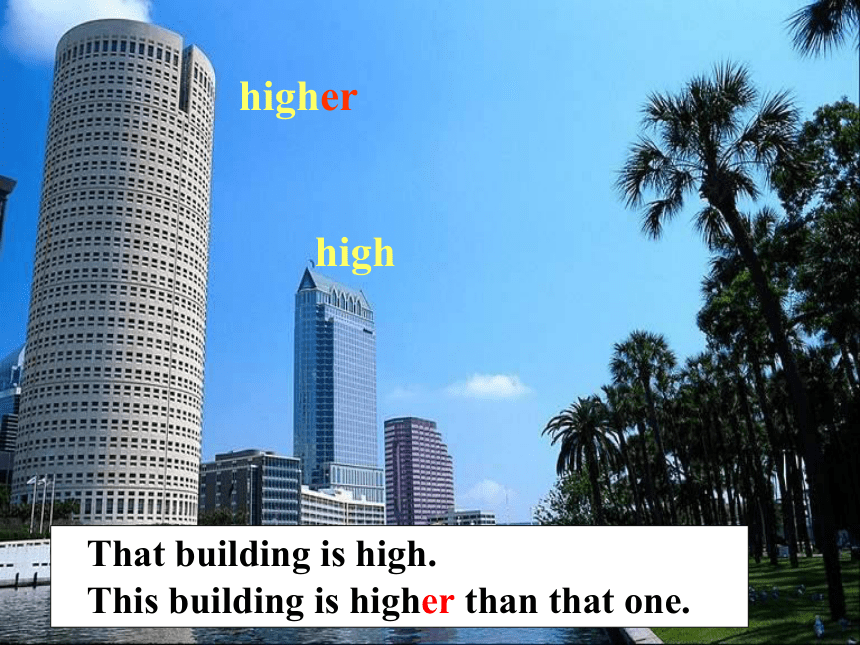
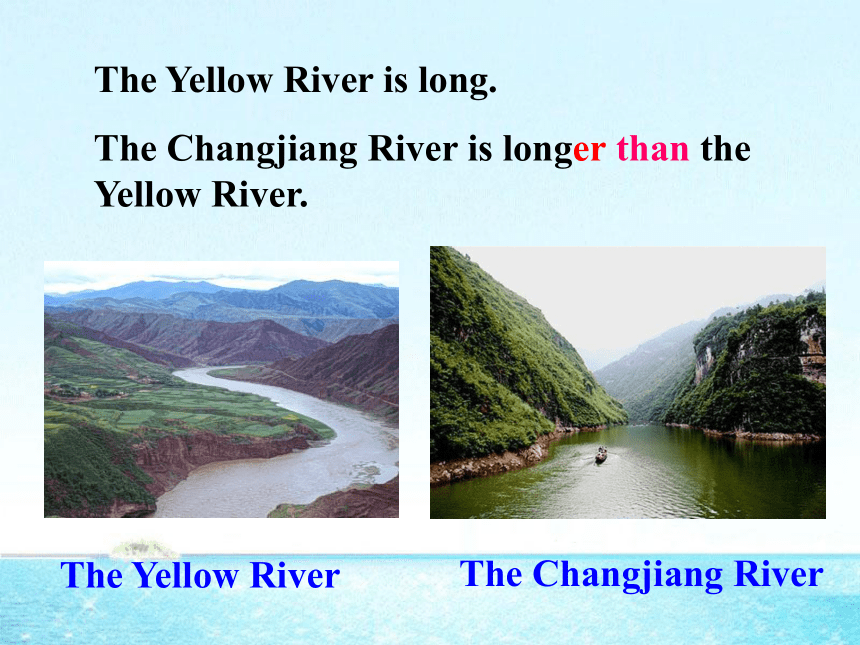
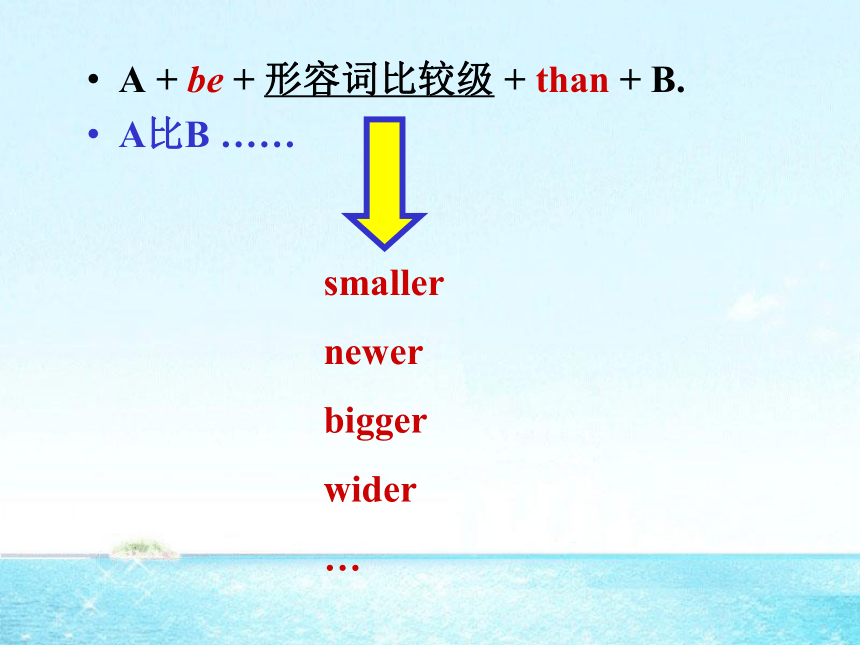
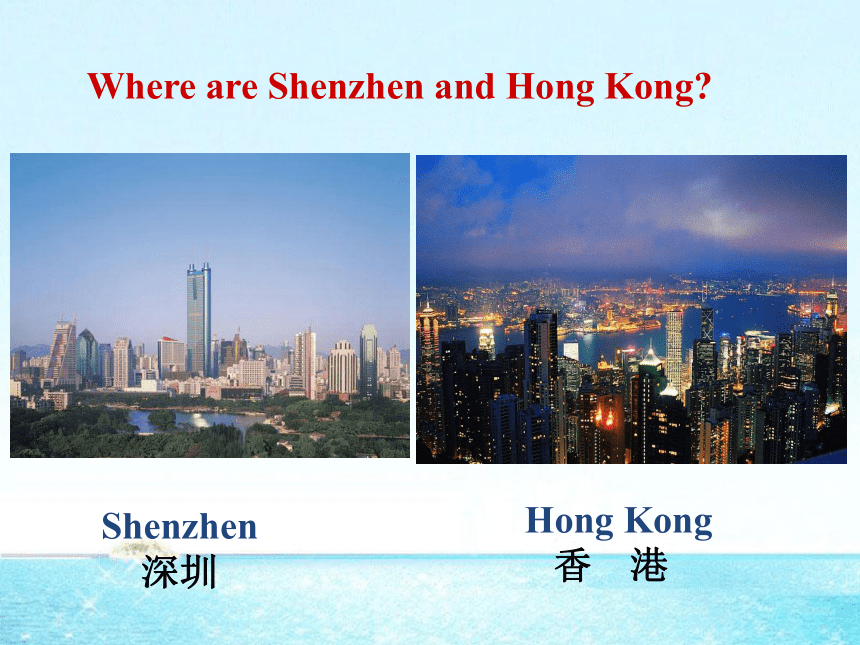
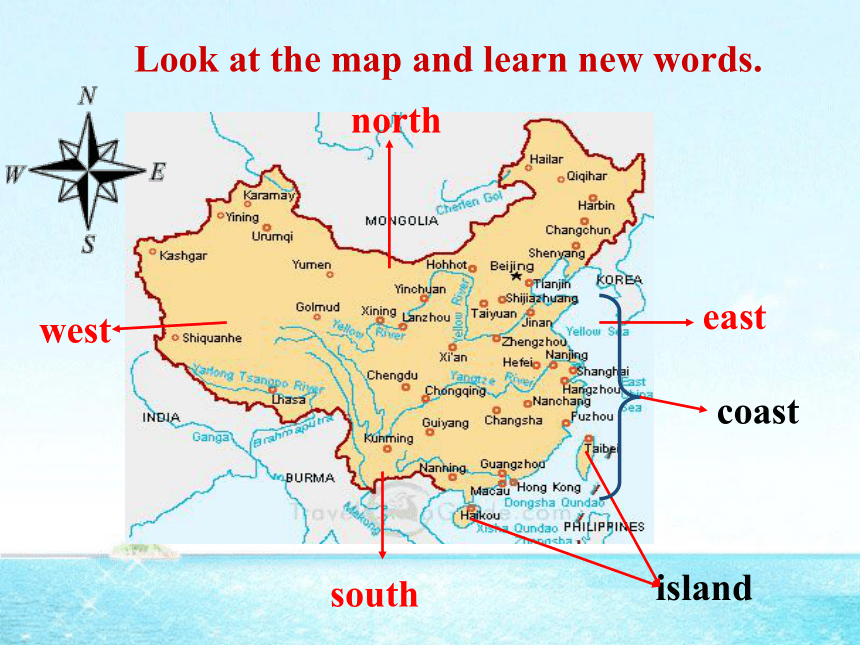
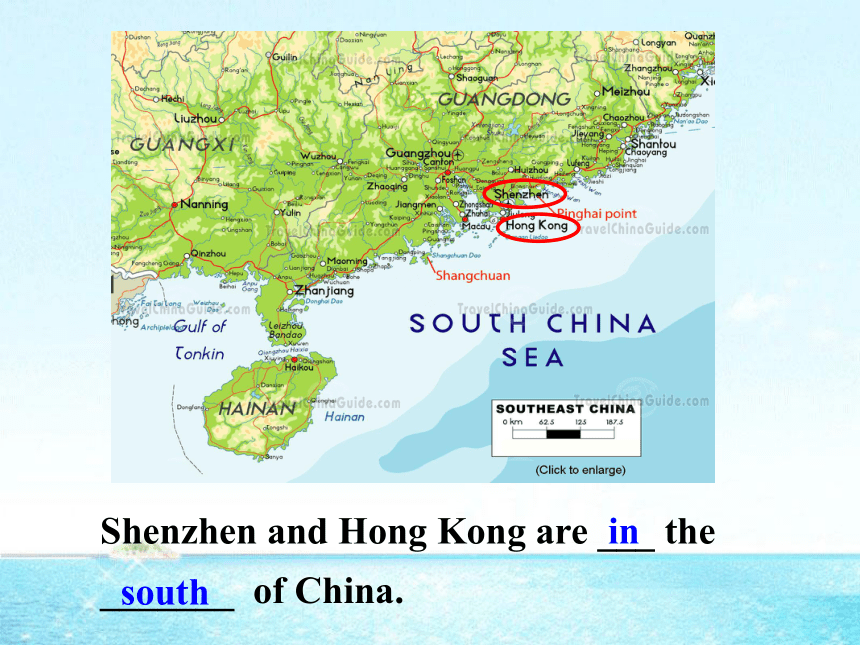
文档简介
课件41张PPT。2My home town and my countryModuleUnit 1
It’s taller than many other buildings
Liu Xiang is tall. Pan Changjiang
is short. Liu Xiang is taller than Pan Changjiang.Warming upLin Xinru is thin.Liu Yifei is thinner. Liu Yifei is thinner than Lin Xinru.45kg48kg Beijing
- my hometownin the north of China20 million (百万) people Shenzhen
-your hometownin the south of China10 million peopleBeijing is bigger than Shenzhen.
Shenzhen is smaller than Beijing.higherhighThat building is high.This building is higher than that one.The Yellow RiverThe Changjiang RiverThe Yellow River is long.
The Changjiang River is longer than the Yellow River.A + be + 形容词比较级 + than + B.
A比B ……smaller
newer
bigger
wider
…Shenzhen
深圳Hong Kong
香 港Where are Shenzhen and Hong Kong?northsouthwesteastislandLook at the map and learn new words.coastShenzhen and Hong Kong are ___ the _______ of China.insouthThe Diwang TowerVictoria PeakJin Mao TowerLook at the pictures and talk about them. Use the words from the box.high hill population river wideListen and complete.Place: ___________
Population: ___________ million
Jin Mao Tower: ___________ metres highPlace: ____________
Population: ___________ million
Victoria Peak: ___________ metres highShanghai23.5420.5Hong Kongseven5522 Now listen and complete the passage about Shenzhen.
Shenzhen is on the coast near Hong Kong. It became important in the .Before that it was a ____________. Today the population of Shenzhen is more than ____million. There are many tall buildings in Shenzhen. A famous one is the _____________.It is ______than many other buildings in Shenzhen.
1980ssmall villageten Diwang Towertaller 3 Complete the sentences with the correct
form of the words in the box. big busy clean large new small wide
1. About thirty years ago, Shenzhen was a_____ village,
but today it is a very city.
2. It is a ______ city than Hong Kong.
3. It is getting _____ and _____. The streets are _____
and ______.
4. It will become as as Hong Kong.
5. The population is ______ than that of many other
cities in China.
smallbig/largenewerbiggerbusierwidercleanerbusylargerKey words and expressions1. in the 1980s in the 1980s 表示“20世纪80年代”。“ in + the + 时间s” 表示 “在某年代或特定世纪某年代”。如:
Cars of this kind were made in the 1930s.
Great changes have taken place in China in the 1980s.
( ) My uncle moved to London ____
A. in the fifties B. in the 1980s
C. in his fifty D. in 1980s2. million million 数词,意为“百万”。 million前有具体数字时, million后不能加s, 如two million(两百万);如果无具体数字时, 后面要加s并与of 连接, 表示不确切的数字“数百万的”,即millions of。 He was prepared to pay two million.
他愿意支付200万。
A careless mistake cost the company millions of pounds.
一个粗心的错误使公司蒙受数百万镑的损失。About forty ________children from poor families still need ________.
A. million;help
B. million;helps
C. millions; helpAhundred, thousand, million这些词的用法极为相似,需注意的用法有:
当这些词与具体数字连用时,通常不加复数词尾-s, 也不后接介词 of。
2. 当这些词不与具体数字连用,而是表示不确定的泛指数时,则不仅要加复数词尾-s, 而且要后接介词 of, 然后才能接名词。注意There are about two ______ students in the newly built school. (2006 杭州)
A. thousand B. thousands
C. thousand of D. thousands of
解析:当hundred, thousand, million, billion等词前有确切数字时,这些词应用单数形式。答案A。 3. population population n. 人口
是一个集体名词,当其用作主语时, 谓语动词常用第三人称单数形式。如:
The population of Paris is 7 million.
巴黎的人口有七百万。
注意: 表示人口的“多”或“少”, 要用large或small, 不能用much或little。如:
China has a large population.
中国人口多。[拓展]
表达“某地有多少人口”通常有两种方法:
●"The population of + 某地+ be + 数词"。如:
The population of Shanghai is 13 million.
上海的人口有一千三百万。
●"某地+ has a population of +数词"。如:
Shanghai has a population of 13 million.
上海有一千三百万人。 [Practice]
请根据上句改写下句,使上下两句意思相
同或相近。
1. What’s the population of Japan?
___________ people __________ in Japan?
What’s the ____________ the people in Japan?number of How manyare there2. The number of the people in our city is five million.
___________________ our city is five million.
Our city has ________________ five million.
___________ five million people in our city. There areThe population ofa population of[考题链接]
( ) The experts think that India’s population may be ______ than China’s ______ 2020.
A. many, by
B. more, in
C. larger, by解析:此题考查人口的“多”或“少”的表达,由于题目中有 than,要用比较级,故先排除A;而指“人口多”时要用 large, 故选 C。 --- What’s _____ population of China?
--- China has ______ population of 1.3
billion.
A. a; the B. the; a
C. /; / D. the; the
- ______ is the population of the town?
- Over 20,000. And a third of the population
______ workers of the car factory.
A. What; are B. How many; are
C. What; is D. How many; is BA4. get get 在本课做系动词,后面必须接形容词,意为“变成、变得”。如:
As you get old, your memory gets worse.
当你变老的时候,你的记忆力会变差。
The weather gets warmer, and the days get longer.
天气变得更暖和了,天也变得更长了。 — Shenzhen is bigger in population than Beijing?
— No, it isn’t. It’s smaller.
—Hong Kong is newer than Shenzhen.
— No, it isn’t. It’s older.
— Shenzhen is as old as Hong Kong?
— No, it isn’t. It’s newer.
—Hong Kong is as busy as Shenzhen?
— No, it isn’t. It’s busier.Listen to the underlined word.population: 20 millionIt is older than Shenzhen.It is colder than Shenzhen.BeijingWork in pairs and think of two cities. Compare the two cities. Make up your own dialogue and act it out.population: 10 millionShenzhen is smaller than Beijing.It is newer than Beijing.It is hotter than Beijing.ShenzhenCompare Shenzhen with your home town. Make notes in the table.Work in pairs. Talk about the differences between Shenzhen and your home town. Use big, small, hot, cold, tall or new. --- Is your home town bigger than Shenzhen?
--- No, it isn’t. It’s smaller than Shenzhen.---What’s the population of Shanghai?
---It has a population of 13 million.---Is Hong Kong bigger than Shanghai?
---No. Shanghai is bigger than Hong Kong.1. --上海有多少人口? --一千三百万人口。2. ---香港比上海大吗? --不,上海比香港大。ExercisesTranslate the sentences.4. 哪一个更繁华一些, 上海还是香港?In winter Shanghai is colder than
Hong Kong.Which is busier, Shanghai or Hong Kong?3. 上海的冬天比香港冷。1.This pen is ______than that one. (long)
2.It’s ______and _______than Cambridge. (big, busy)
3.Who is ________ (heavy) , you or your brother?
4.Is Shanghai ______in winter than Hong Kong ?(hot)
5.Planes are ________ (fast) than trains. fasterheavierhotterbiggerbusierlongerFill in the blanks.HomeworkThink of two cities you know in China and try to compare them using big, small, hot, cold, old or new.
It’s taller than many other buildings
Liu Xiang is tall. Pan Changjiang
is short. Liu Xiang is taller than Pan Changjiang.Warming upLin Xinru is thin.Liu Yifei is thinner. Liu Yifei is thinner than Lin Xinru.45kg48kg Beijing
- my hometownin the north of China20 million (百万) people Shenzhen
-your hometownin the south of China10 million peopleBeijing is bigger than Shenzhen.
Shenzhen is smaller than Beijing.higherhighThat building is high.This building is higher than that one.The Yellow RiverThe Changjiang RiverThe Yellow River is long.
The Changjiang River is longer than the Yellow River.A + be + 形容词比较级 + than + B.
A比B ……smaller
newer
bigger
wider
…Shenzhen
深圳Hong Kong
香 港Where are Shenzhen and Hong Kong?northsouthwesteastislandLook at the map and learn new words.coastShenzhen and Hong Kong are ___ the _______ of China.insouthThe Diwang TowerVictoria PeakJin Mao TowerLook at the pictures and talk about them. Use the words from the box.high hill population river wideListen and complete.Place: ___________
Population: ___________ million
Jin Mao Tower: ___________ metres highPlace: ____________
Population: ___________ million
Victoria Peak: ___________ metres highShanghai23.5420.5Hong Kongseven5522 Now listen and complete the passage about Shenzhen.
Shenzhen is on the coast near Hong Kong. It became important in the .Before that it was a ____________. Today the population of Shenzhen is more than ____million. There are many tall buildings in Shenzhen. A famous one is the _____________.It is ______than many other buildings in Shenzhen.
1980ssmall villageten Diwang Towertaller 3 Complete the sentences with the correct
form of the words in the box. big busy clean large new small wide
1. About thirty years ago, Shenzhen was a_____ village,
but today it is a very city.
2. It is a ______ city than Hong Kong.
3. It is getting _____ and _____. The streets are _____
and ______.
4. It will become as as Hong Kong.
5. The population is ______ than that of many other
cities in China.
smallbig/largenewerbiggerbusierwidercleanerbusylargerKey words and expressions1. in the 1980s in the 1980s 表示“20世纪80年代”。“ in + the + 时间s” 表示 “在某年代或特定世纪某年代”。如:
Cars of this kind were made in the 1930s.
Great changes have taken place in China in the 1980s.
( ) My uncle moved to London ____
A. in the fifties B. in the 1980s
C. in his fifty D. in 1980s2. million million 数词,意为“百万”。 million前有具体数字时, million后不能加s, 如two million(两百万);如果无具体数字时, 后面要加s并与of 连接, 表示不确切的数字“数百万的”,即millions of。 He was prepared to pay two million.
他愿意支付200万。
A careless mistake cost the company millions of pounds.
一个粗心的错误使公司蒙受数百万镑的损失。About forty ________children from poor families still need ________.
A. million;help
B. million;helps
C. millions; helpAhundred, thousand, million这些词的用法极为相似,需注意的用法有:
当这些词与具体数字连用时,通常不加复数词尾-s, 也不后接介词 of。
2. 当这些词不与具体数字连用,而是表示不确定的泛指数时,则不仅要加复数词尾-s, 而且要后接介词 of, 然后才能接名词。注意There are about two ______ students in the newly built school. (2006 杭州)
A. thousand B. thousands
C. thousand of D. thousands of
解析:当hundred, thousand, million, billion等词前有确切数字时,这些词应用单数形式。答案A。 3. population population n. 人口
是一个集体名词,当其用作主语时, 谓语动词常用第三人称单数形式。如:
The population of Paris is 7 million.
巴黎的人口有七百万。
注意: 表示人口的“多”或“少”, 要用large或small, 不能用much或little。如:
China has a large population.
中国人口多。[拓展]
表达“某地有多少人口”通常有两种方法:
●"The population of + 某地+ be + 数词"。如:
The population of Shanghai is 13 million.
上海的人口有一千三百万。
●"某地+ has a population of +数词"。如:
Shanghai has a population of 13 million.
上海有一千三百万人。 [Practice]
请根据上句改写下句,使上下两句意思相
同或相近。
1. What’s the population of Japan?
___________ people __________ in Japan?
What’s the ____________ the people in Japan?number of How manyare there2. The number of the people in our city is five million.
___________________ our city is five million.
Our city has ________________ five million.
___________ five million people in our city. There areThe population ofa population of[考题链接]
( ) The experts think that India’s population may be ______ than China’s ______ 2020.
A. many, by
B. more, in
C. larger, by解析:此题考查人口的“多”或“少”的表达,由于题目中有 than,要用比较级,故先排除A;而指“人口多”时要用 large, 故选 C。 --- What’s _____ population of China?
--- China has ______ population of 1.3
billion.
A. a; the B. the; a
C. /; / D. the; the
- ______ is the population of the town?
- Over 20,000. And a third of the population
______ workers of the car factory.
A. What; are B. How many; are
C. What; is D. How many; is BA4. get get 在本课做系动词,后面必须接形容词,意为“变成、变得”。如:
As you get old, your memory gets worse.
当你变老的时候,你的记忆力会变差。
The weather gets warmer, and the days get longer.
天气变得更暖和了,天也变得更长了。 — Shenzhen is bigger in population than Beijing?
— No, it isn’t. It’s smaller.
—Hong Kong is newer than Shenzhen.
— No, it isn’t. It’s older.
— Shenzhen is as old as Hong Kong?
— No, it isn’t. It’s newer.
—Hong Kong is as busy as Shenzhen?
— No, it isn’t. It’s busier.Listen to the underlined word.population: 20 millionIt is older than Shenzhen.It is colder than Shenzhen.BeijingWork in pairs and think of two cities. Compare the two cities. Make up your own dialogue and act it out.population: 10 millionShenzhen is smaller than Beijing.It is newer than Beijing.It is hotter than Beijing.ShenzhenCompare Shenzhen with your home town. Make notes in the table.Work in pairs. Talk about the differences between Shenzhen and your home town. Use big, small, hot, cold, tall or new. --- Is your home town bigger than Shenzhen?
--- No, it isn’t. It’s smaller than Shenzhen.---What’s the population of Shanghai?
---It has a population of 13 million.---Is Hong Kong bigger than Shanghai?
---No. Shanghai is bigger than Hong Kong.1. --上海有多少人口? --一千三百万人口。2. ---香港比上海大吗? --不,上海比香港大。ExercisesTranslate the sentences.4. 哪一个更繁华一些, 上海还是香港?In winter Shanghai is colder than
Hong Kong.Which is busier, Shanghai or Hong Kong?3. 上海的冬天比香港冷。1.This pen is ______than that one. (long)
2.It’s ______and _______than Cambridge. (big, busy)
3.Who is ________ (heavy) , you or your brother?
4.Is Shanghai ______in winter than Hong Kong ?(hot)
5.Planes are ________ (fast) than trains. fasterheavierhotterbiggerbusierlongerFill in the blanks.HomeworkThink of two cities you know in China and try to compare them using big, small, hot, cold, old or new.
同课章节目录
- Module 1 How to learn English
- Unit 1 Let's try to speak English as much as possi
- Unit 2 You should smile at her.
- Unit 3 Language in use .
- Module 2 My home town and my country
- Unit 1 It's taller than many other buildings.
- Unit 2 Cambridge is a beautiful city in the east o
- Unit 3 Language in use .
- Module 3 Sports.
- Unit 1 Nothing is more exciting than playing tenni
- Unit 2 This year we training more carefully.
- Unit 3 Language in use .
- Module 4 Planes, ships and trains .
- Unit 1 He lives the farthest from school.
- Unit 2 What is the best way to travel.
- Unit 3 Language in use .
- Module 5 Lao She Teahouse.
- Unit 1 I wanted to see the Beijing Opera.
- Unit 2 It descibes the changes in Chinese society.
- Unit 3 Language in use .
- Module 6 Animals in danger.
- Unit 1 It allows people to get closer to them .
- Unit 2 The WWF is working hard to save them all.
- Unit 3 Language in use .
- Revision module A
- Module 7 A famous story
- Unit 1 Alice was sitting with her sister by the ri
- Unit 2 She was thinking about her cat.
- Unit 3 Language in use .
- Module 8 Accidents
- Unit 1 While the car were changing to red, a car s
- Unit 2 I was trying to pick it up when it bite me
- Unit 3 Language in use .
- Module 9 Population
- Unit 1 The population of China is about 1.37 billi
- Unit 2 Arnwick was a city with 200,000 people.
- Unit 3 Language in use .
- Module 10 The weathe
- Unit 1 It might snow.
- Unit 2 The weather is fine all year round.
- Unit 3 Language in use .
- Module 11 Way of life
- Unit 1 In China ,we open a gift later.
- Unit 2 In England, you usually drink tea with milk
- Unit 3 Language in use .
- Module 12 Help
- Unit 1 What should we do before help arrives?
- Unit 2 Stay away from windows and heavy furniture.
- Unit 3 Language in use .
- Revision module B
